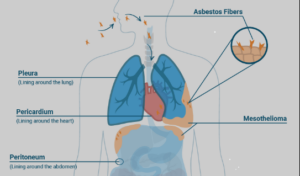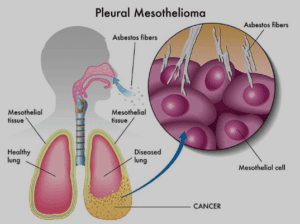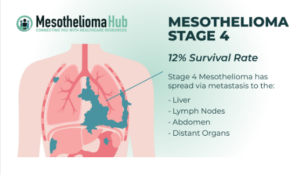Mesothelioma: Unraveling the Silent Threat
Table of Contents
- Introduction
- Understanding Mesothelioma
- 2.1 What is Mesothelioma?
- 2.2 Causes and Risk Factors
- Types of Mesothelioma
- 3.1 Pleural Mesothelioma
- 3.2 Peritoneal Mesothelioma
- 3.3 Pericardial Mesothelioma
- 3.4 Testicular Mesothelioma
- Symptoms and Early Detection
- Diagnosis and Staging
- 5.1 Imaging Tests
- 5.2 Biopsy Procedures

- Mesothelioma Treatment Options
- 6.1 Surgery
- 6.2 Chemotherapy
- 6.3 Radiation Therapy
- 6.4 Immunotherapy
- 6.5 Clinical Trials
- Coping with Mesothelioma
- 7.1 Supportive Care
- 7.2 Palliative Care
- Legal Aspects: Seeking Compensation
- 8.1 Asbestos Exposure Lawsuits
- 8.2 Statute of Limitations
- Prevention and Awareness
- 9.1 Occupational Safety Measures
- 9.2 Advocacy and Education
- Living with Mesothelioma: Patient Stories
- Mesothelioma Research: Progress and Challenges
- Support Groups: Building a Community
- Future Perspectives in Mesothelioma Treatment
- Mesothelioma and its Impact on Families
- Conclusion
Mesothelioma: Unraveling the Silent Threat
Mesothelioma, a word that carries a sense of mystery and foreboding, is a rare but deadly form of cancer. In this comprehensive guide, we will delve into the intricacies of mesothelioma, understanding its origins, exploring its various types, and shedding light on crucial aspects such as diagnosis, treatment, and the legal dimensions surrounding this silent threat.
1. Introduction
Mesothelioma is a cancer that primarily affects the protective lining of the body’s internal organs, known as the mesothelium. While it is a relatively rare form of cancer, its association with asbestos exposure has brought it to the forefront of health concerns.
2. Understanding Mesothelioma
2.1 What is Mesothelioma?
Mesothelioma originates in the cells of the mesothelium, a membrane that covers and protects various internal organs. The cancer is notorious for its long latency period, often taking decades to manifest after initial exposure to asbestos.
2.2 Causes and Risk Factors
Asbestos exposure remains the primary cause of mesothelioma. Understanding the risk factors, such as occupational exposure and secondary exposure through contaminated environments, is crucial in preventing this deadly disease.
3. Types of Mesothelioma
Mesothelioma manifests in different forms, each affecting specific regions of the body. Understanding these variations is essential for accurate diagnosis and effective treatment.
3.1 Pleural Mesothelioma
The most common type, affecting the lining of the lungs, pleural mesothelioma accounts for the majority of mesothelioma cases.
3.2 Peritoneal Mesothelioma
Affecting the lining of the abdomen, peritoneal mesothelioma presents its own set of challenges in terms of diagnosis and treatment.
3.3 Pericardial Mesothelioma
This rare form impacts the lining around the heart, posing unique difficulties in early detection and intervention.
3.4 Testicular Mesothelioma
Though extremely rare, testicular mesothelioma affects the lining of the testes, necessitating specialized approaches in diagnosis and treatment.
4. Symptoms and Early Detection
Understanding the early signs of mesothelioma is crucial for timely intervention. Persistent cough, chest pain, abdominal swelling, and other symptoms should not be ignored, especially in individuals with a history of asbestos exposure.
5. Diagnosis and Staging
5.1 Imaging Tests
Various imaging tests, such as X-rays, CT scans, and MRIs, play a crucial role in diagnosing mesothelioma and determining its extent.
5.2 Biopsy Procedures
Biopsy procedures, involving the removal and examination of tissue samples, provide definitive confirmation of mesothelioma and aid in staging the disease.
6. Mesothelioma Treatment Options
Mesothelioma treatment approaches are diverse, often involving a combination of surgery, chemotherapy, radiation therapy, immunotherapy, and participation in clinical trials.
6.1 Surgery
Surgical interventions aim to remove cancerous tissues and, in some cases, affected organs to curb the spread of mesothelioma.
6.2 Chemotherapy
Chemotherapy, involving the use of powerful drugs, is a common treatment modality to destroy cancer cells and prevent their recurrence.
6.3 Radiation Therapy
Precise targeting of cancer cells through radiation therapy is a crucial aspect of mesothelioma treatment, particularly in cases where surgery is not feasible.
6.4 Immunotherapy
Immunotherapy harnesses the body’s immune system to fight cancer cells, presenting a promising avenue in mesothelioma treatment.
6.5 Clinical Trials
Participation in clinical trials provides access to cutting-edge treatments and contributes to ongoing research for better mesothelioma therapies.
7. Coping with Mesothelioma
7.1 Supportive Care
Supportive care focuses on alleviating symptoms and improving the quality of life for mesothelioma patients, addressing physical and emotional needs.
7.2 Palliative Care
Palliative care aims to enhance the overall well-being of patients, providing comfort and support throughout their mesothelioma journey.
8. Legal Aspects: Seeking Compensation
Understanding the legal dimensions of mesothelioma is essential for individuals seeking compensation for asbestos exposure-related damages.
8.1 Asbestos Exposure Lawsuits
Lawsuits related to asbestos exposure can help victims obtain compensation for medical expenses, lost wages, and pain and suffering.
8.2 Statute of Limitations
Navigating the statute of limitations is crucial in pursuing legal action for mesothelioma cases, emphasizing the importance of timely legal intervention.
9. Prevention and Awareness
9.1 Occupational Safety Measures
Implementing stringent occupational safety measures and regulations is pivotal in preventing future cases of mesothelioma.
9.2 Advocacy and Education
Raising awareness about mesothelioma and its preventable nature is crucial in fostering a safer environment and protecting individuals from asbestos exposure.
10. Living with Mesothelioma: Patient Stories
Real-life stories of individuals living with mesothelioma provide insights into the challenges they face, the treatments they undergo, and the strength they exhibit in their journey.
11. Mesothelioma Research: Progress and Challenges
Exploring the current state of mesothelioma research, we uncover the progress made and the challenges that researchers continue to confront in the quest for effective treatments.
12. Support Groups: Building a Community
Support groups play a vital role in connecting mesothelioma patients, survivors, and their families, offering a sense of community and shared experiences.
13. Future Perspectives in Mesothelioma Treatment
Examining the future of mesothelioma treatment, we explore emerging therapies and advancements that hold promise for better outcomes.
14. Mesothelioma and its Impact on Families
The ripple effect of mesothelioma extends beyond the patient, impacting families emotionally, physically, and financially.
15. Conclusion
In conclusion, mesothelioma is a complex and challenging disease that demands a multifaceted approach. From understanding its origins to exploring treatment options and legal considerations, this guide aims to provide a comprehensive resource for those affected by mesothelioma.

